By: Helmut Sies
Published in the journal Redox Biology. Click here to view the full article.
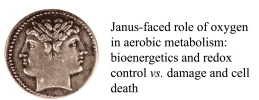 “Oxidative stress” as a concept in redox biology and medicine has been formulated in 1985; at the beginning of 2015, approx. 138,000 PubMed entries show for this term. This concept has its merits and its pitfalls. Among the merits is the notion, elicited by the combined two terms of (i) aerobic metabolism as a steady-state redox balance and (ii) the associated potential strains in the balance as denoted by the term, stress, evoking biological stress responses. Current research on molecular redox switches governing oxidative stress responses is in full bloom.
“Oxidative stress” as a concept in redox biology and medicine has been formulated in 1985; at the beginning of 2015, approx. 138,000 PubMed entries show for this term. This concept has its merits and its pitfalls. Among the merits is the notion, elicited by the combined two terms of (i) aerobic metabolism as a steady-state redox balance and (ii) the associated potential strains in the balance as denoted by the term, stress, evoking biological stress responses. Current research on molecular redox switches governing oxidative stress responses is in full bloom.
The fundamental importance of linking redox shifts to phosphorylation/dephosphorylation signaling is being more fully appreciated, thanks to major advances in methodology. Among the pitfalls is the fact that the underlying molecular details are to be worked out in each particular case, which is bvious for a global concept, but which is sometimes overlooked. This can lead to indiscriminate use of the term, oxidative stress, without clear relation to redox chemistry. The major role in antioxidant defense is fulfilled by antioxidant enzymes, not by small-molecule antioxidant compounds. The field of oxidative stress research embraces chemistry, biochemistry, cell biology, physiology and pathophysiology, all the way to medicine and health and disease research.
— Published
Category: Redox Biology
By: Artak Tovmasyan, Duke University School of Medicine
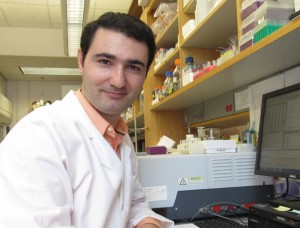 So many young researchers around the country are doing amazing work in their fields, but too often they face challenges taking their discoveries to the next level. This is a story of how SFRBM and my mini-fellowship made all the difference.
So many young researchers around the country are doing amazing work in their fields, but too often they face challenges taking their discoveries to the next level. This is a story of how SFRBM and my mini-fellowship made all the difference.
Redox-active therapeutics, which have been designed to modulate the imbalance between reactive species and endogenous defense systems, have been aggressively developed and are proceeding toward clinical trials in diseases that have an oxidative stress component. These therapeutics are readily engaged in redox reactions. Besides direct scavenging of reactive species, their impact on cellular redox-sensitive pathways seems to be implicated in their mechanism(s) of action. Our lab at the Duke University School of Medicine (@dukemedschool) has been in the forefront of development of one of the most powerful class of SOD-mimics - Mn porphyrins. These compounds have shown therapeutic potential in protecting various organisms affected by factors/mediators of oxidative stress. Yet, as our knowledge grew, several other mechanisms indicating the role of thiol-related pools in their mechanism of action emerged. It was in 2012, at the San Diego SFRBM meeting, that I had the great pleasure to listen to Dr. Dean Jones’s lecture on “The Cysteine Proteome.” After a brief discussion with my supervisor, Dr. Ines Batinic-Haberle, and after receiving Dr. Jones’s kind agreement, I decided to apply for SFRBM mini-fellowship award program.
I was thrilled to be awarded this fellowship, which afforded me a great opportunity to study the emerging mechanisms of actions of Mn porphyrins in a leading laboratory. The preparations followed, i.e. setting up the most appropriate start time, collecting samples for analyses, purchasing required chemicals, assuring the availability of appropriate instruments, etc. I would like, however, to stress another benefit of the fellowship: the experience with a new supervisor and new research environment, which is critically important in the development of young scholar as an independent scientist. As such, this scholarship offered not only the possibility to learn and employ novel techniques in my Institution, but also to enhance my professional interpersonal skills and expertise in a research atmosphere which would facilitate their efficient implementation in my career. Even though I have experienced a phenomenal training throughout my postdoc studies, experiencing a new research environment is always a challenge and impacts self-confidence of many young scholars. Dr. Jones and his research personnel, the wonderful people that I had the pleasure to work with, Young-Mi Go, Michael Orr, Joshua D. Chandler, created a truly scientific and all-positive atmosphere for me to advance rapidly with my studies during my short stay.
As we are pursuing scientific successes and happiness, each one of us tries to accumulate knowledge, skills and experience. Along the journey of our life we begin to realize that passing skills on to younger colleagues and students is a superior goal that a human can achieve. Here it is appropriate to cite Aristotle’s principal idea: Everything is done with a goal, and that goal is "good"; search for the “good” is a search for the “highest good” – happiness. In line with such thoughts, communicating the knowledge from one generation to another is an outstanding “good” that humanity could exercise to achieve happiness; fortunately, SFRBM knows how to facilitate the process that leads to such a goal.
— Published
Category: Education
Part 2 of 2 featuring Council Trainee Candidates
Morgan Locy, University of Alabama at Birmingham
 |
| Morgan Locy |
As a future physician-scientist, my primary research goals revolve around the idea of utilizing redox biology to translate into medical therapies. I do not have a determined path of what my clinical specialty will be; however, I am a firm believer that aberrations in redox biology underlie pathophysiology of most, if not all, disease states. Therefore, upon determining my clinical interests I will be able to apply redox biology as the central component of my chosen research. I am currently studying the effects that redox biology has on the pathophysiology of pulmonary fibrosis.
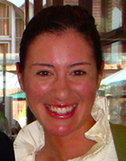 |
| Laura Corrales-Diaz Pomatto |
Laura Corrales-Diaz Pomatto, University of Southern California
Our lab focuses upon oxidative stress and adaptation, in particular the 20S proteasome and the mitochondrial Lon protease. My research focus is centered upon understanding how the adaptive response of both these proteases change with age in the model organism Drosophila melanogaster. In both instances, the ability of D. melanogaster to adapt is robust in young females, but declines with age. I am currently exploring methods of potential ways to restore adaptive capacity in the aged fruit-fly.
 |
| David Schnel |
David Schnell, University of Kentucky
Approximately 90 years ago, Otto Warburg observed an increase in glycolysis among amply oxygenated tumor cells and introduced the concept of aerobic glycolysis to the field of cancer metabolism. However, after near a century of research, the underlying causes of aerobic glycolysis are yet to be understood. My research investigates the origins of aerobic glycolysis through the lens of MnSOD deficiency, common in many early cancers. I am teasing apart the metabolic responses to decreased MnSOD through stable isotope resolved metabolomics (SIRM) and building a bridge from redox environment to the origins of the Warburg effect.
 |
| Phillip Wages |
Phillip Wages, University of North California
I am interested in mechanistic toxicology within the scope of how environmental exposures impact human health. Through my work I have seen a broad underutilization of redox biology in many toxicology studies, and because of this I have a strong interest to integrate these two fields better. I am currently driven to understand the role of hydrogen peroxide and protein sulfenylation in air pollutant-induced perturbations of cellular signaling. However, I plan to dedicate my future efforts to the broader field of redox proteomics by identifying novel redox proteins and assess their potential role in pathophysiology.
SfRBM Members can click here to take part in the Trainee Council Elections
— Published
Category: SfRBM Member Profile
Part 1 of 2 featuring Council Trainee Candidates
Edward Moreira Bahnson, Northwestern University
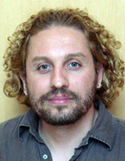 |
| Edward Moreira Bahnson |
I started my scientific training working with Dr. Radi in the chemistry and biochemistry of reactive species. During my graduate work I focused on redox biology of the vasculature studying the biochemistry of cobalamin and reactive species in the endothelium. As a postdoctoral fellow, I have focused in the redox signals that drive the development of neointimal hyperplasia in the injured vasculature. I’m interested in the development of redox-based therapies for the inhibition of neointimal hyperplasia, as well as understanding the molecular mechanisms of the altered redox environment after arterial injury. In particular I’m interested in S-nitrosylation and NOX-dependent signaling.
Kim Dunham-Snary, Queen's University - Canada
 |
| Kim Dunham-Snary |
I am interested in how the mitochondrion, and specifically, mitochondrial DNA (mtDNA), influence susceptibility to disease. Known racial disparities exist for numerous pathologies including cardiovascular disease, metabolic diseases and even some cancers. Since the mitochondrial genome varies between geographical populations, it may be a substantial contributing factor to both the onset and severity of these and other pathologies. My previous work focused on mtDNA sequence variation and body composition as it relates to obesity and metabolic disease. My postdoctoral research will include investigating mtDNA structure and organelle dynamics in pulmonary arterial hypertension (PAH) and lung cancer.
 |
| Sam Giordano |
Sam Giordano, University of Alabama at Birmingham
My research interests include mitochondrial function and signaling, ROS, and inflammation in rat and pig models of vascular injury. Briefly, interleukin 8 (IL8) is upregulated during vascular injury and by overexpressing IL8 receptors on endothelial cells (ECs), and these ECs target to the sites of injury. Intravenous transfusion of the ECs overexpressing IL8 receptors into rat models have shown targeting to sites of injury, decreases in inflammatory cytokines and attenuation of vascular remodeling. Furthermore, we intend to determine the effects of alterations in the inflammatory cascade on ROS signaling and mitochondrial function during vascular injury.
SFRBM Members can click here to take part in the Trainee Council Election
— Published
Category: SfRBM Member Profile
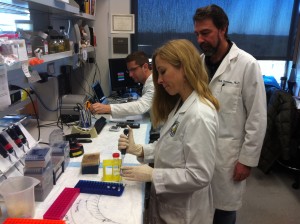 For someone starting out in his or her career, a mentor can be a critical part of success. Mentors provide knowledge, support and networking opportunities. They help their protégés learn from their own experiences, successes and mistakes. But mentoring is more than simply answering occasional questions or providing help to the new kid on the block when he asks for it. It’s about an ongoing relationship of learning and guidance.
For someone starting out in his or her career, a mentor can be a critical part of success. Mentors provide knowledge, support and networking opportunities. They help their protégés learn from their own experiences, successes and mistakes. But mentoring is more than simply answering occasional questions or providing help to the new kid on the block when he asks for it. It’s about an ongoing relationship of learning and guidance.
In choosing a professional mentor, it’s helpful to find someone based on similar interests and career aspirations. Consider who has the skills you would like to strengthen or develop and whose work you admire. A potential mentor’s personality and communication style should match yours. He or she should be able to relate to and empathize with your goals or challenges in order to provide the most effective counsel. For instance, a female mentor raising a family might become a strong role model for a young woman struggling to balance work and home life. The relationship you build with a mentor should encourage open discussion of career and workplace issues.
Strong mentors will expect the best from their students. He or she will provide an encouraging, supportive, and safe environment for fulfilling those expectations. We have found this to be true in the world of scientific research. Students know they can depend on mentors to give them their best efforts in both the direction of research and as a trusted counselor to help navigate careers. Workplaces and organizations with formal mentoring programs often provide guidelines for roles and responsibilities that ensure a positive experience.
 In a successful mentoring relationship, mentors get something out of it, too. They appreciate the youthful spirit, energy and fresh and creative minds that keep them optimistic and engaged. They enjoy watching their protégés get inspired, work passionately and succeed. Commitment to excellence in mentoring is a win-win situation for both mentee and mentor.
In a successful mentoring relationship, mentors get something out of it, too. They appreciate the youthful spirit, energy and fresh and creative minds that keep them optimistic and engaged. They enjoy watching their protégés get inspired, work passionately and succeed. Commitment to excellence in mentoring is a win-win situation for both mentee and mentor.
Allan Butterfield, Ph.D., is a professor of biological chemistry at the University of Kentucky. He is the co-recipient of the 2014 SFRBM Mentoring Excellence award.
— Published
Category: Education